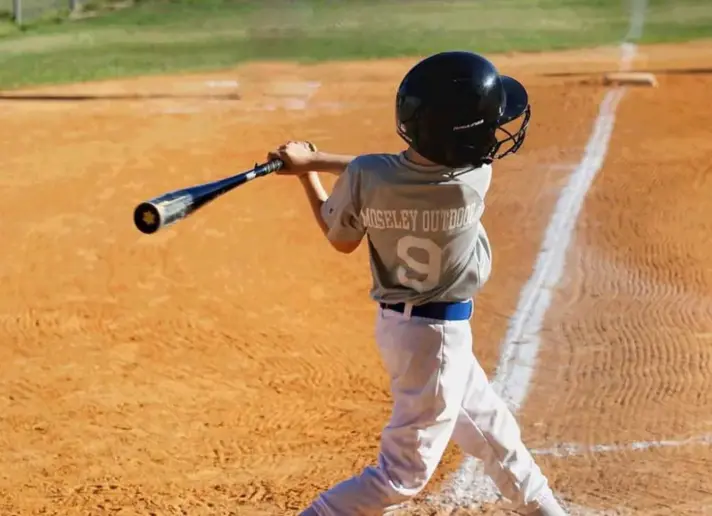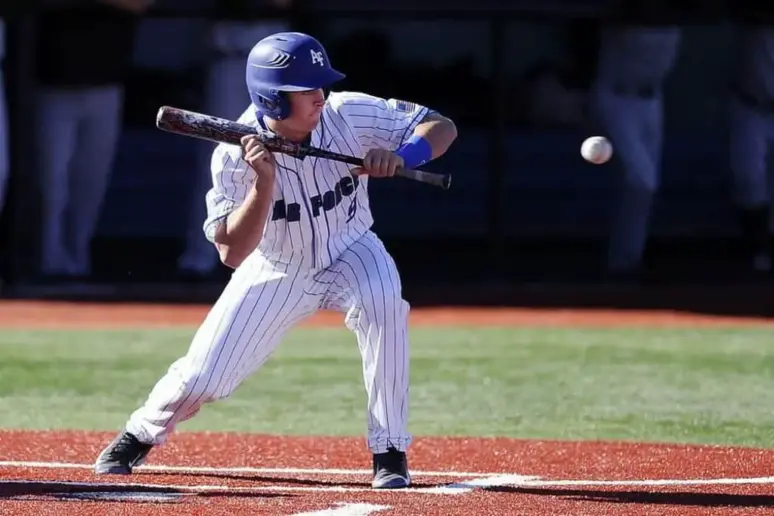BBCOR vs USSSA – What’s Better? (Explained!)
With all the options now available, choosing a baseball bat can often feel overwhelming.
With so many factors to consider, it can be difficult to even know where to start.
Bat weight, length, grip, manufacturer, material, and, ultimately, the price should all be taken into consideration.
In addition, the bat selection will frequently be directly dependent on the level of baseball you’re involved with.
Baseball bats carry different certifications and fall into different categories.
Different leagues and age groups have their own standards that bats need to meet. And, these certifications indicate if a bat fulfills a certain standard.
There are several certifications for baseball bats, but the two most common ones are BBCOR and USSSA.
To make sure that you got the right bat for your level of competition, I’ll explain what each of them means and settle any BBCOR vs USSSA dilemma you may have.
Table could not be displayed.Table of Contents
What Does BBCOR Mean on a Bat?

BBCOR has been present in collegiate and high school baseball for a decade now, but there’s still a lot of confusion about this standard.
A lot of people and players themselves are unsure what it even means and how does it influence the baseball bat performance.
First, let’s get into the basics.
BBCOR is an acronym standing for Batted Ball Coefficient of Restitution.
It’s the standard that regulates the amount of energy lost as the bat makes contact with the baseball.
For those less versed in baseball, this may sound rather confusing. So, I’ll try to explain it in a more understandable way.
Trampoline Effect And Bat Performance Factor
Simply put, BBCOR controls the “trampoline effect” of the bat or its barrel, to be more precise. It also measures how it affects the exit speed of the ball.
If the “trampoline effect” provides more bounce, the ball will come off the bat faster. The BBCOR value indicates the Bat Performance Factor (BPF).
BPF is, basically, the increase in the liveliness of the ball after hitting it with a bat compared to throwing it against a solid wall.
So, for example, 0.50 BPF stamp on No products found. indicates that the ball rebounding off a stationary bat will lose 50% of its pitching velocity.
Composite And Alloy Bats Vs Wooden Ones Before BBCOR
In the past, before the BBCOR was introduced, composite or alloy bats would have their barrels slightly flex inwards, thus allowing the ball to retain some of its energy and resulting in further hits.
This was not the case with classic wooden baseball bats which caused the ball to lose a lot of its energy upon impact.
One of the main reasons for the BBCOR certificate introduction was to have these modern baseball bats perform more comparably to wooden ones.
The thought behind this was to ensure that the playing field is as level as possible.
More Safety
Besides, the standard also has a role in improving the safety of players and fans.
BBCOR is meant to put more value on the batter’s skill and reduce the inflated offensive number players were putting in, especially when it comes to home runs.
In 2011, BBCOR replaced the BESR standard.
The previous certification indicated the ratio between the incoming speed of the pitch and the speed of the ball after the impact of the barrel.
Compared to BESR, BBCOR certificated reduced the speed of the batted balls by 5%.
Right now, the BBCOR standard is implemented in all leagues organized by the National Collegiate Athletic Association (NCAA) and the National Federation of State High School Associations (NFHS).
The two organizations have set the maximum BBCOR value at 0.50. This is slightly higher than the value achieved with wooden bats.
No products found.
In fact, all BBCOR bats have a “BBCOR Certified .50” sign on the barrel or taper. These bats also have to adhere to a couple of other rules:
- Maximum barrel diameter of 2 ⅝ inches
- Drop weight (the difference between the length (in inches) and weight (in ounces)) cannot be higher than -3
- The maximum bat length can’t exceed 36 inches
When all the BBCOR requirements are implemented, the main difference between different types of bats is the swing weight.
End-loaded bats have more weight towards the end and usually suit the power hitter better.
On the other hand, a bat with a more balanced weight distribution is preferred by contact hitters.
What Does USSSA Mean on a Bat?

The USSSA is an acronym for the United States Specialty Sports Association, a non-profit, volunteer organization governing youth baseball and several other sports in the US.
The goal of the organization is to provide a fair and high-quality sports environment for youth athletes.
This governing body sets the rules and regulations which must be followed by all of the tournament directors.
Among these rules are those prescribing which baseball bats can be used in youth competitions.
Bat standards introduced by the USSSA have been set in 2005 and haven’t changed since.
They remained intact even with the enactment of the USA Bat standards. Bats that carry the certificate of the association are mostly used in travel baseball tournaments.
Among others, in USSSA World Series, Elite World Series, All-American Games, and Global Sports World Series.
Although they are mainly intended for young players, No products found. don’t adhere to no strict age criteria.
Players must only follow the USSSA rules based on the division they’re playing in.
Performance Advantage
The USSSA certified bats must have a 1.15 BPF (Bat Performance Factor).
Each bat must have the stamp of approval on its handle with the “1.15 BPF USSSA” mark.
With BPF rating this high, USSSA bats provide a certain performance advantage over the other USA and BBCOR certified bats or wooden bats.
USSSA also allows a wider barrel diameter compared to other standards.
It’s important to note that USSSA bats have to be BBCOR certified too. Before they’re legal for USSSA play, these bats must pass the BBCOR certification.
No products found.
Besides the 1.15 BF and BBCOR standard, USSSA bats must also adhere to the following rules:
- Maximum barrel diameter of 2 ¾ inches
- Must be manufactured by a USSSA approved manufacturer
- Must have a drop weight of -10, -8, or -5
BBCOR Bats vs USSSA Bats – What is Better?
The BBCOR vs USSSA bats comparison is not easily done as they each adhere to different regulations.
Still, there’s no denying that, due to more lenient standards, USSSA bats provide better performance.
However, if you’re playing college or high school baseball, or preparing for it, you don’t have much choice than to go for BBCOR certified bat.
In general, as they have lower BPF, BBCOR bats are more suited to older and stronger players.
They put limitations on how far and fast the ball can travel off the bat, keeping everyone on the field safe.
On the other hand, USSSA bats, besides higher BPF, also have wider barrel diameter and provide some help to younger players to hit the ball harder and with more confidence.
A higher drop weight value is also pretty important when it comes to how far and fast the ball will fly.
As for safety, lack of strength with young batters compensates for the faster and further traveling of the ball.
Still, a lot of older players like to use USSSA bats due to the lack of restrictions.
In addition, bats adhering to the BBCOR standard have less pop to them. They usually feature something called the “restrictor ring” in the barrel.
It reduces the barrel’s springiness and decreases the “trampoline effect.” The walls on these barrels are also commonly much thicker.
It creates smaller sweet hitting spots and makes them more similar to wooden bats.
In opposition, USSSA bats have thinner and unrestricted barrel walls, allowing the batters more freedom.
These thin walls result in a better feel for the ball and a better “trampoline effect”.
Besides, the ball impact produces a more loud and hollow sound.
This, in addition to more weight and a larger hitting surface, boosts the batting strength and increases the exit speed of the ball.
The best USSSA certified bats can help the hitter reach his optimal performance.
The BBCOR vs USSSA difference is best observed when the same player is hitting with both bats.
A well-struck ball will travel 25-40 feet further when using the USSSA bat.
Table could not be displayed.Conclusion
Choosing between BBCOR and USSSA bats is more the matter of which league you play in than a personal preference.
In a way, these standards can spare you having to think about which type of bat to select.
Still, you should do the research and make sure that you know which standard is required at the league you’re competing at.
Using an illegal bat can easily cost your team a game. The player with an unapproved bat can often be ejected as well as the team coach.
Of course, there’s still a matter of choosing a particular model that adheres to one of these certifications.
One thing is certain, whatever level of competition, you can rest assured that both standards were adopted after extensive studies and collecting a huge amount of data.
The ultimate goal for both of them is to create a level playing field and a safe environment for all ballgame participants.




